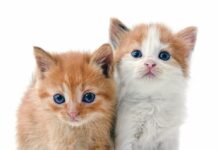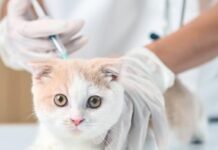Feedback from TNR Groups
Most “trap-neuter-return” feral cat groups provide vaccines and other veterinary services prior to releasing them, according to a survey of 120 such groups conducted by Alley Cat Rescue, a feral cat TNR advocacy group.
Ninety-six percent of the groups provide rabies vaccinations, while 64 percent provide distemper vaccinations. Twelve percent provide feline leukemia shots, 62 percent deworm feral cats and 64 percent provide flea treatment.
The majority (96 percent) of feral cat groups neuter stray cats before placing them in homes, and most groups also provide spay and neuter services to owned cats to prevent future colonies from forming, according to Alley Cat Rescue.
Feral cat groups’ efforts to educate the public about trap-neuter-release programs have been productive, with 65 percent of respondents calling their education efforts “somewhat” effective, and 18 percent finding their efforts extremely successful.
Most animal control agencies do not offer trap-neuter-release programs (61 percent), and one in three agencies have trapped and killed whole colonies, according to respondents.
Respondents had some luck working with the animal control agencies, with a fairly even split between “difficult” and “somewhat successful” responses and 21 percent of respondents reporting a “positive” experience.
A New Oral NSAID for Cats
Novartis Animal Health has recently unveiled its Onsior (robenacoxib) tablets — a three-day non-steroidal anti-inflammatory drug for postoperative cats. The drug is indicated for the control of postoperative pain and inflammation associated with orthopedic surgery, ovariohysterectomy and castration. It is the first multidose oral NSAID to be approved for cats, according to Novartis.
The drug’s short blood half-life causes the active ingredient to be quickly eliminated from the blood while persisting longer at the site of inflamed tissue, allowing for once-a-day administration for up to three days, the company reported.
Side effects observed during a clinical field trial and six-month safety study included surgical site bleeding, infected surgery sites, lethargy, vomiting and inappetence.
The drug is indicated for cats weighing 5.5 pounds or heavier, and at least six months old, for a maximum of three days. The drug should not be used in cats that have a hypersensitivity to robenacoxib or known intolerance to NSAIDs. The drug should not be administered in conjunction with any other oral or injectable NSAID or corticosteroid, according to Novartis.
Help for the Burmese Breed
Burmese cats can inherit a muscle weakness — called Burmese hypokalaemia — which is caused by low levels of blood potassium. However, with the identification of the genetic mutation responsible for the disease, a genetic test has been developed.
The researchers hope that, by genetic testing and selective breeding, the disease can eventually be eradicated in the Burmese breed.
This genetic disease — also known as Familial Episodic Hypokalaemic Polymyopathy — is characterized by skeletal muscle weakness, which is episodic in nature and can either impact the animal’s entire body or may be localized to the neck or limb muscles. As a result, affected cats usually have problems walking and holding their head correctly.
The new genetic test for Burmese hypokalaemia allows cat breeders, owners and veterinarians to test for this disease. Burmese hypokalaemia is an autosomal recessive disease, which means that carrier cats do not show signs of disease. However, mating two cats carrying the mutation has a 25 percent chance of producing kittens that will be affected.
According to Dr. Chris Helps, Head of the Molecular Diagnostic Unit at Langford Veterinary Services (LVS): “It is possible to continue to use carrier cats in breeding programmes to retain important breeding lines and to avoid reducing the size of the Burmese gene pool. As long as carrier cats are mated to normal cats, no affected kittens will be produced. This mating is likely to produce kittens that are carriers, which can be identified by genetic testing and, if necessary, future matings arranged with normal cats.”
Clinical signs in cats affected by the disease can usually be managed by adding potassium supplements to their diet. In some affected cats, clinical signs disappear when the cats reach the ages of one or two.



